Al-Qaeda and Iran: The Alliance Against the US
Download PDFPage Navigation
At first glance, the Islamic Republic of Iran and Al-Qaeda may seem unlikely to collaborate due to the deep-rooted sectarian divisions within Islam. The Islamic Republic adheres to a version of Shiism, which is fundamentally at odds with the Sunni extremist ideology of Al-Qaeda’s leadership, who consider Shiism heretical. However, this divide has not precluded cooperation under certain conditions, as the Islamic Republic and Al-Qaeda have found common cause in their shared enmity toward the West, particularly the United States (US) and Israel.
The Islamic Republic and Al-Qaeda have covertly cooperated since the 1990s, often doing so by proxy. According to the research conducted as part of the 9/11 Commission Report, informal links emerged between 1991 and 1992, while Al-Qaeda was based in Sudan. These links developed into formal cooperation following visits to Iran and Lebanon by senior Al-Qaeda leaders, which were accompanied by tactical training activities. After Al-Qaeda relocated to Afghanistan, the Islamic Republic began to offer logistical support and a safe haven for the organization’s operatives. In July 2011, the US formally accused Iran of playing a critical role in Al-Qaeda terrorist attacks, particularly the 1998 bombing of the US embassies in Kenya and Tanzania. In various ways, the Islamic Republic and Al-Qaeda have continually cooperated as their interests align.
The alliance between the Islamic Republic, identified as a significant state sponsor of terrorism, and Al-Qaeda, a notorious terrorist organization, poses a continued threat to US interests. This report aims to trace the development of the Iran-Al-Qaeda alliance from its origins in the early 1990s to its current state.
Origins
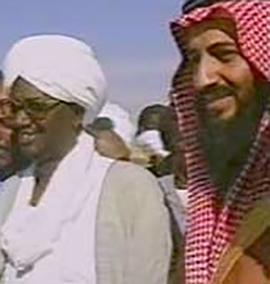 Ties between Iran and Al Qaeda began in the early 1990's when Hasan Al Turabi and Osama Bin Laden (pictured) met in Sudan.
Ties between Iran and Al Qaeda began in the early 1990's when Hasan Al Turabi and Osama Bin Laden (pictured) met in Sudan.
1991-1996: Links Between the Islamic Republic, Al-Qaeda, and Hezbollah
Ties between the Islamic and Al-Qaeda emerged almost a decade before the War on Terror. The initial groundwork for cooperation was established in the early 1990s, when Hasan Al-Turabi, the leader of Sudan's National Islamic Front, began to encourage reconciliation between Shias and Sunnis in order to defeat their common enemy, namely the US and its allies. According to US court records, Osama bin Laden was living in Khartoum during this time. As a result of Al-Turabi’s efforts, the Sudanese religious scholar Ahmed Abdel Rahman Hamadabi brought Sheikh Nomani, a well-connected emissary of the Islamic Republic, to meet with the developing Al-Qaeda leadership.
As a result of this meeting, the Islamic Republic and Al-Qaeda reached an informal agreement to cooperate between 1991 and 1992. This cooperation amounted to the Islamic Republic offering to provide critical explosives, intelligence, and tactical training to bin Laden's organization. These training activities were initiated in Sudan, with senior Al-Qaeda operatives also travelling to Iran shortly thereafter.
Additional early cooperation was also facilitated by Hezbollah, the Islamic Republic’s proxy in Lebanon. Since the turmoil of the Lebanese Civil War in the early 1980s, the Islamic Revolutionary Guard Corps (IRGC) has supported Hezbollah operationally and financially. As a result, the organization has developed into a means for the Islamic Republic to export its radical Shia ideology and act as an important terrorist proxy. As such, the Islamic Republic could limit the risks of cooperating with Al-Qaeda directly by engaging through Hezbollah. After the initial meetings in Sudan, the Islamic Republic consulted Hezbollah, and the organization invited Al-Qaeda to send a contingent of operatives to Lebanon’s Bekaa Valley for additional training in 1993.
The impact of Hezbollah’s support for Al-Qaeda on behalf of the Islamic Republic is clear. According to the 9/11 Commission Report, Hezbollah facilitated the transfer of explosive material from the Islamic Republic to Al-Qaeda. Hezbollah also frequently assisted Al-Qaeda with money laundering and the movement of weapons. Furthermore, bin Laden’s terror tactics were inspired by the 1983 Beirut barracks bombing which killed 241 US Marines, which was planned by Hezbollah leader Imad Mughniyeh.
This period of early cooperation between the Islamic Republic, its proxies, and Al-Qaeda demonstrates that sectarian divisions are not an insurmountable barrier to cooperation in terrorist operations. It also displays the depth of the Islamic Republic’s connections with the terrorist organization.
Consolidation
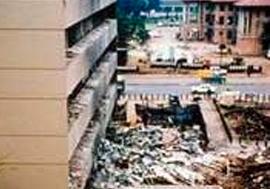
1996-2000: The Islamic Republic Strengthens Ties with Al-Qaeda in Afghanistan
After Al-Qaeda's expulsion from Sudan following its unsuccessful attempt to assassinate Egyptian President Hosni Mubarak in 1996, the organization relocated to Afghanistan. The Islamic Republic provided significant assistance during these relocation efforts, expanding cooperation in the process. Senior Al-Qaeda operative Mustafa Hamid negotiated a secret relationship between bin Laden and the IRGC that allowed Al-Qaeda operatives safe transit to Afghanistan via Iran, with logistical support offered to many. Additionally, the Islamic Republic obfuscated its role in these efforts, as border guards were instructed not to stamp passports belonging to these Al-Qaeda operatives. As further evidence of this increasing cooperation, it is reported that between 1996 and 1998, nearly 10 percent of Osama bin Laden's outgoing calls were to Iranian numbers.
During this period, the harrowing impact of cooperation between the Islamic Republic and Al-Qaeda via Hezbollah became apparent. On August 7, 1998, Al-Qaeda successfully employed the training they received to devastating effect – carrying out two simultaneous suicide truck bombings outside the US embassies in Nairobi, Kenya, and Dar es Salaam, Tanzania, killing 223 people and injuring thousands more. Following the embassy bombings, the US Attorney’s Office for the Southern District of New York unsealed its indictment of the terrorist organization Al-Qaeda and its leader Osama bin Laden on November 5, 1998. This indictment explicitly states: “Al-Qaeda forged alliances with the National Islamic Front in the Sudan and with the government of Iran and its associated terrorist group, Hezbollah, for the purpose of working together against their perceived common enemies in the West, particularly the United States.”
Further confirming its role in Al-Qaeda’s attack, a US district court judge found in November 2011 that the Islamic Republic was guilty of contributing critical “material support.” According to the judge’s decision, “the government of Iran aided, abetted, and conspired with Hezbollah, Osama bin Laden, and Al-Qaeda to launch large-scale bombing attacks against the United States by utilizing the sophisticated delivery mechanism of powerful suicide truck bombs.” The judge argues that “Prior to their meetings with Iranian officials and agents, bin Laden and Al-Qaeda did not possess the technical expertise required to carry out the embassy bombings in Nairobi and Dar es Salaam. The Iranian defendants, through Hezbollah, provided explosives training to bin Laden and Al-Qaeda and rendered direct assistance to Al-Qaeda operatives.”
After the 1998 bombings demonstrated the consolidation of the Islamic Republic’s cooperation with Al-Qaeda, Iran made a concerted effort to support further attacks, such as the bombing of the USS Cole in 2000. This involved efforts by the Islamic Republic to assist Al-Qaeda in establishing a Yemen network, along with continued training and logistical support. Through these events, the potency of the burgeoning alliance between the Islamic Republic and Al-Qaeda became increasingly clear.
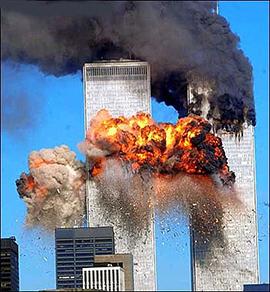 The 9/11 Commission Report states that “there is strong evidence that Iran facilitated the transit of Al Qaeda members into and out of Afghanistan before 9/11.”
The 9/11 Commission Report states that “there is strong evidence that Iran facilitated the transit of Al Qaeda members into and out of Afghanistan before 9/11.”
The Islamic Republic’s Role in the September 11 Attacks
The deadly impact of the Islamic Republic’s alliance with Al-Qaeda was laid bare with the attacks of September 11, 2001. Throughout 2000-2001, Al-Qaeda operatives responsible for the attacks transited through Iran without receiving passport stamps. The 9/11 Commission Report states that Hezbollah operatives were closely tracking the travel of some of these future hijackers, calling for further investigation into this matter.
Though the Report also asserts there is no direct evidence that Iran and Hezbollah were aware that the 9/11 attacks were going to take place, further reporting has challenged this conclusion. According to The New York Times, two defectors from Iran's intelligence service have since testified that Iranian officials had foreknowledge of the September 11 attacks. One defector even claimed that the Islamic Republic was involved in planning the attacks. Court papers also include sworn statements from staff members of the 9/11 Commission, including Dietrich Snell, a former top terrorism prosecutor at the Justice Department, who states that “there is clear and convincing evidence the government of Iran provided material support to Al-Qaeda in the planning and execution of the September 11 attacks.” He further states that the Islamic Republic facilitated “the travel of members of the 9/11 conspiracy to and from Afghanistan and Pakistan.”
Regardless, it is clear that the September 11 attacks were enabled by training and material support offered by the Islamic Republic and Hezbollah. In December 2011, a New York judge ruled that Iran was liable for the September 11 attacks because of these efforts. He also notes in his ruling that Iran "continues to provide material support and resources to Al-Qaeda by providing a safe haven for Al-Qaeda leadership and rank-and-file Al-Qaeda members." Furthermore, on March 9, 2016, as part of a civil suit that ended in a multibillion-dollar judgment, it was found that the Islamic Republic “provided material support or resources…to Al-Qaeda generally.” Such material support was deemed to include, among other things, “planning, funding, facilitation of the hijackers’ travel and training, and logistics, and included the provision of services, money, laundering, training, expert advice or assistance, safehouses, false documentation or identification and/or transportation.”
Officials within the Islamic Republic have all but confirmed many aspects of US investigations into the September 11 attacks. In a 2018 interview on Iranian state television, Mohammad-Javad Larijani, former secretary of the High Council for Human Rights, stated, “Our government agreed not to stamp the passports of some of them [Al-Qaeda operatives] because they were on transit flights for two hours, and they were resuming their flights without having their passports stamped. However, their movements were under the complete supervision of the Iranian intelligence.” Though the full extent of the Islamic Republic’s involvement in the September 11 attacks may never come to light, the regime’s alliance with Al-Qaeda clearly played a significant role.
Continued Cooperation
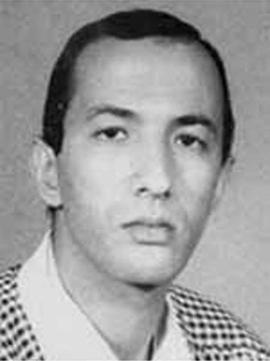 Saif al-Adel (pictured), the alleged Al-Qaeda mastermind of the 1998 U.S. embassy bombings, is reportedly based in Syria after nearly 15 years in Iran.
Saif al-Adel (pictured), the alleged Al-Qaeda mastermind of the 1998 U.S. embassy bombings, is reportedly based in Syria after nearly 15 years in Iran.
2001-Present: The Islamic Republic’s Harboring of Al-Qaeda
After the launch of Operation Enduring Freedom in October 2001 in response to the September 11 attacks, many members of Al-Qaeda, including bin Laden, fled to the Federally Administered Tribal Areas of Western Pakistan. However, key elements of Al-Qaeda were granted refuge in Iran by the Islamic Republic. In late 2001, Mustafa Hamid, an Al-Qaeda operative with a history of negotiating with the Islamic Republic, secured the relocation of Al-Qaeda families to Iran. Al-Qaeda’s second-in-command, Ayman al-Zawahiri, initiated additional negotiations with the Islamic Republic’s former IRGC Quds Force Commander Ahmad Vahidi, as reported in 2003. According to this report, this negotiation resulted in Iran providing refuge for Al-Qaeda operatives who were trapped in the mountains of Tora Bora in eastern Afghanistan.
Furthermore, under certain arrangements, key members of Al-Qaeda's operational structure came to reside in Iran with necessary residence and identification papers. This included such infamous figures as Saif al-Adel (head of Al-Qaeda’s security committee), Hamza and Saad bin Laden (Osama bin Laden's sons), Abdullah Ahmed Abdullah (financial officer of Al-Qaeda), Abdullah Ahmed Abdullah (head of Al-Qaeda’s training sub-section), and Abu Musab al-Zarqawi (future leader of Al-Qaeda in Iraq). Nominally, the Islamic Republic held these Al-Qaeda operatives under "house arrest," but in reality, Al-Qaeda was using Iran as a base of operations. One Al-Qaeda member noted that there were several stages of restrictions, but in the end, it was “not really house arrest but rather a hospitality.”
In the decades after the September 11 attacks, the Islamic Republic has continued to provide refuge to Al-Qaeda operatives. In November 2020, the New York Times exposed that Abdullah Ahmed Abdullah, alias Abu Muhammad Al-Masri, was gunned down in Tehran on August 7, 2020, along with his daughter, the widow of Hamza Bin Laden. Iran initially sought to obfuscate the identity of the slain Al-Qaeda operative, reportedly the organization’s second in command at the time. Official media organs claimed the victims were a Lebanese history professor affiliated with Hezbollah and his daughter. Al-Masri, who allegedly ordered the 1998 embassy bombings, was targeted for killing by two gunmen on a motorbike on the 22nd anniversary of those attacks. According to a senior US official, Israeli agents acting at the behest of the US carried out the assassination. Although initially under house arrest, al-Masri had reportedly been living freely in an upscale Tehran suburb since 2015.
Furthermore, there reporting emerged in 2020 that Saif al-Adel, Al-Qaeda’s second highest-ranking member after Ayman al-Zawahiri, returned to Iran having left in the years after the September 11 attacks. A year later, the United Nations (UN) confirmed that Saif al-Adel was once again residing in Iran. In February of 2023, the UN further confirmed that Saif al-Adel had succeeded Ayman al-Zawahiri as leader of Al-Qaeda. As of the latest reporting, he remains harbored by the Islamic Republic.
Some analysts suggest that it is unlikely the leader of Al-Qaeda will live permanently in the Islamic Republic, given the sectarian tensions that exist between the two. They further argue that the Islamic Republic and Al-Qaeda compete for influence, and that there is distrust toward the Islamic Republic among Al-Qaeda’s ranks. According to some reporting, Saif al-Adel’s residence in Iran delayed his ascension. However, the Islamic Republic has yet to expel Saif al-Adel as some anticipated. As of January 2024, a U.N. report said he still resided in Iran and that Al-Qaeda has safe houses that facilitate movement for operatives between Afghanistan and Iran. The same can be said for Abd al-Rahman al-Maghrebi and other al-Qaeda operatives who remain in Iran. Iran’s decades-long history of harboring Al-Qaeda operatives and Saif al-Adel’s ongoing presence in Iran demonstrates that sectarian differences will obstruct future relations between the Islamic Republic and Al-Qaeda.
Continued Cooperation
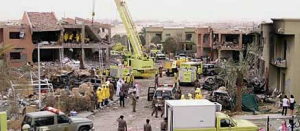 The Aftermath of the 2003 Riyadh compound bombings (pictured), reportedly planned and ordered by Al Qaeda operatives in Iran. 35 people died in the attack, including 8 Americans.
The Aftermath of the 2003 Riyadh compound bombings (pictured), reportedly planned and ordered by Al Qaeda operatives in Iran. 35 people died in the attack, including 8 Americans.
2001-2015: The Islamic Republic’s Efforts to Facilitate Al-Qaeda Terrorism
Beyond providing a safe haven to Al-Qaeda operatives, the Islamic Republic has worked to facilitate Al-Qaeda’s terrorist activity. According to Abu Hafs Mauritania, an Al-Qaeda operative, the organization’s leaders agreed not to carry out attacks from within Iran in exchange for refuge. However, over the following decades, the Islamic Republic permitted Al-Qaeda to use its territory to plan terrorist attacks abroad and transit money, arms, and fighters.
The earliest confirmed Al-Qaeda terrorist attack planned from Iran was the 2002 bombing of a Tunisian synagogue, which left 21 dead. This trend continued in 2003, as Al-Qaeda commandos attacked residential compounds housing foreign workers in Riyadh, Saudi Arabia. This attack killed 35 people, including 8 US citizens. According to reports, the operation was planned and ordered by Al-Qaeda operatives in Iran – specifically Saif al-Adel and Saad bin Laden. Through the UN, the US conveyed its "deep concern that individuals associated with Al-Qaeda have planned and directed the attack in Saudi Arabia from inside Iran." This was confirmed as it became clear Saif al-Adel relayed orders from Ayman al-Zawahiri to Tanzim Qaedat fi al-Jazeeratul Arab (the Al-Qaeda organization on the Arabian Peninsula).
The Islamic Republic took an increasingly direct role in Al-Qaeda’s terrorist activities. Documents leaked by US military intelligence in 2010 outline “Iran's alleged role in brokering arms deals between North Korea and Pakistan-based militants, particularly militant leader Gulbuddin Hekmatyar and Al-Qaeda." As part of this deal, Hekmatyar reportedly traveled from Iran to North Korea in 2005 "to close a deal with the North Korean government to obtain remote-controlled rockets to use against coalition aircraft in Afghanistan." Further leaked documents revealed a 2006 "Al-Qaeda-Hekmatyar plot to equip suicide bombers and car bombs to attack Afghan government and international targets - using cars and equipment obtained in Iran." And lastly, an April 2007 report detailed an operation in which "Al-Qaeda, ‘helped by Iran,' bought 72 air-to-air missiles from Algeria and hid them in Zahedan, Iran, in order to later smuggle them into Afghanistan." During this time, Saif al-Adel was even allowed by the Islamic Republic to travel to Pakistan and open direct contact with other Al-Qaeda leaders. Remaining in Iran while possessing the freedom to travel suggests that Al-Qaeda leaders were beginning to perceive Iran as an increasingly important outpost.
In the following years, the Islamic Republic’s role in facilitating Al-Qaeda’s continued terrorism became increasingly apparent. This was confirmed by an intercepted letter reportedly sent to the IRGC in 2008 by Al-Qaeda leader Ayman al-Zawahiri after the September 19, 2008, attacks on the American embassy in Sana'a, Yemen, which killed 19 people. In the letter, Al-Qaeda leaders praise Iran's generosity and write that without its “monetary and infrastructure assistance,” the group could not have conducted the attack. It also thanked Iran for having the “vision” to help establish Al-Qaeda bases in Yemen. In April 2013, a foiled plot to derail a train between New York and Toronto was revealed to have been supported by Al-Qaeda elements in Iran.
Furthermore, cooperation between the Islamic Republic and Al-Qaeda was corroborated by materials recovered in the May 2, 2011 raid on Osama bin Laden’s compound in Abbottabad, Pakistan. After the raid, US intelligence sifted through the recovered materials for information regarding Al-Qaeda plots and the identities and locations of Al-Qaeda operatives. On May 20, 2015, and March 1, 2016, the Office of the Director of National Intelligence released a sizeable tranche of declassified documents with important insights. For instance, in a 2007 letter to an Al-Qaeda operative named “Karim,” bin Laden gave justification for why Iran should not be attacked. Bin Laden writes, “Iran is our main artery for funds, personnel, and communication, as well as the matter of hostages…There is no need to fight with Iran unless you are forced to.” He further advises against any attack on Iran, going to great lengths to urge any ambitious operatives to seek advisement or permission before any form of reprisal against Iran. According to another letter revealed in July 2016, Al-Qaeda operatives based in Iran worked on chemical and biological weapons. Additional documents indicate that the Islamic Republic offered Al-Qaeda assistance—specifically “money, arms… [and] training in Hezbollah camps in Lebanon, in exchange for striking American interests in Saudi Arabia and the Gulf.”
In the decades since receiving refuge in Iran, Al-Qaeda operatives have planned terrorist operations that have killed dozens of people, including US citizens, clearly with the assistance of the Islamic Republic. These activities have escalated as Al-Qaeda’s center of power has fully shifted to Iran. As this reporting demonstrates, the Islamic Republic’s alignment with Al-Qaeda has only accelerated since the September 11 attacks.
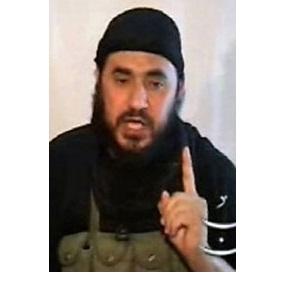 Iran’s safe harbor for Abu Musab al-Zarqawi (pictured) gave him the opportunity to set up Al-Qaeda in Iraq.
Iran’s safe harbor for Abu Musab al-Zarqawi (pictured) gave him the opportunity to set up Al-Qaeda in Iraq.
2015-Present: Strengthening Al-Qaeda’s Power
The Islamic Republic has actively sought to strengthen Al-Qaeda’s power, in alignment with its own interests. This is demonstrated by efforts to facilitate the rise of Al-Qaeda in neighboring Iraq, beginning around 2015. Following the US invasion of Afghanistan, Iran provided a safe haven to Al-Qaeda operative Abu Musab al-Zarqawi, who went on to establish an Al-Qaeda offshoot in Iraq. This offshoot went on to kill untold numbers of Iraqis and Americans.
Al-Zarqawi’s time in Iran was crucial for rebuilding his network before his relocation to Iraq. While the Islamic Republic claimed that it forced al-Zarqawi to leave Iran and that it had arrested many of his personnel, the damage had already been done – al-Zarqawi's base of power was already rebuilt. US officials have also accused the Islamic Republic of providing arms, financial support, and other resources to Al-Qaeda in Iraq. Of course, these activities were all to the Islamic Republic’s benefit, as al-Zarqawi had a critical role in destabilizing Iraq. This laid the groundwork for the Islamic Republic to foster proxies and wield influence in the country.
Similarly, there is clear evidence that the Islamic Republic supported Al-Qaeda’s rise in Syria, to a similar destabilizing effect. Of course, the Islamic Republic played an integral role in sustaining the Syrian regime amidst the ongoing civil war, which began as a popular uprising in March 2011. However, in a double game, Iran allowed senior Al-Qaeda members operating from Iranian soil to facilitate the movement of Sunni fighters into Syria. According to reports, this came after the Islamic Republic reached an agreement with Al-Qaeda members in which they “agreed not to turn their guns on the regime of Bashar al-Assad.” Instead, they would “develop external attacks, construct and test improvised explosive devices, and recruit Westerners to conduct operations.” In September 2015, the US launched missile strikes against the Khorasan Group in Syria, an Al-Qaeda cell that formed in 2012. Furthermore, according to the Obama administration, the Islamic Republic knowingly allowed the Al-Qaeda operatives in Iran to funnel support to Al-Nusra, an affiliated organization in Syria housing the Khorasan Group.
The record of Khorasan Group’s leaders underscores Iranian support for al-Qaeda operations. The Khorasan Group was run by longtime Al-Qaeda leader Muhsin al-Fadhli, who formerly operated the Al-Qaeda network in Iran. When the Treasury Department sanctioned Fadhli, it revealed that he “began working with Al-Qaeda’s Iran-based facilitation network in 2009 and was later arrested by the Iranians.” However, the regime “subsequently released” Fadhli in 2011, and he quickly assumed Al-Qaeda’s top post in the country. The Department stated that Fadhli and his Al-Qaeda comrades in Iran worked "to move fighters and money through Turkey to support al-Qaeda affiliated elements in Syria " with tacit regime approval. The Treasury Department also sanctioned Fadhli’s deputy in Iran, Adel Radi Saqr al-Wahabi al-Harbi, in the designation until he died in 2015 in Syria.
On August 22, 2014, the Treasury Department designated a Saudi known as Snafi al-Nasr, another member of Al-Qaeda’s Khorasan Group who had operated in Iran. The Department said that Nasr served as the “chief of Al-Qaeda’s Iran-based extremist and financial facilitation network” in early 2013. Like Fadhli, Nasr relocated to Syria, where he became a senior member of the Al-Nusra Front. It is likely that the Islamic Republic deliberately allowed Fadhli and Nasr to make this relocation.
Additionally, on February 6, 2014, the Treasury Department designated Jafar al-Uzbeki, a senior Uzbek member of Al-Qaeda, for moving fighters into Syria through Iran. The designation charged that al-Uzbeki “is part of an al-Qaeda network operating from Iran… with the knowledge of Iranian authorities.” According to the Department, the network “uses Iran as a transit point for moving funding and foreign fighters through Turkey to support Al-Qaeda-affiliated elements inside Syria, including the Al-Nusra Front.” Illustrating this point, reports demonstrate that the network moved fighters into Pakistan and Afghanistan from Iran. In July 2016, the US sanctioned Yisra Muhammad Ibrahim Bayumi, who frequently liaised with Islamic Republic officials. As a part of the designation, the Treasury Department stated that Bayumi secured “funds from Syria for Al-Qaeda funds transfers.”
According to analysts, “the growing strength of al-Qaeda’s two offshoots in Syria has helped to preserve Syria’s Assad regime. By discouraging Western countries from aiding Syrian rebels, whose cause has been hijacked by Al-Qaeda.” In his double game, the Islamic Republic has simultaneously “fought Al-Qaeda” and strengthened its power.
In recent years, the Islamic Republic has repeated these efforts by facilitating Al-Qaeda’s ascent in Afghanistan following the withdrawal of US forces. The Islamic Republic has established a policy of allowing the organization’s operatives to travel to and from Afghanistan with impunity while still offering safe haven to Al-Qaeda’s leadership. This could have the long-term impact of undermining Al-Qaeda’s rule in Afghanistan to the Islamic Republic’s benefit. In the coming years, the Islamic Republic will likely expand its collaboration with Al-Qaeda to other areas as their enmity towards both the US interests and peace in the region comes into further alignment.
International Recognition
2010-Present: US Acknowledges Cooperation Between the Islamic Republic and Al-Qaeda
The US began to recognize the Islamic alignment with Al-Qaeda in the early 2000s, but action was delayed. As reported in 2003, US officials noticed an uptick in Al-Qaeda activity following Saad bin Laden’s arrival in Iran. It was only after he departed for Pakistan in 2008 that the US Department of the Treasury froze his assets, along with three other Al-Qaeda leaders. In 2010, the US State Department publicly recognized the Islamic Republic’s efforts to harbor Al-Qaeda operatives. The Department further noted the Islamic Republic’s refusal to extradite the organization’s operatives for prosecution. Furthermore, the Department correctly argued that the Islamic Republic demonstrated it was unable to control Al-Qaeda’s activities. By providing such sanctuary, Iran was accused of violating UN Security Council Resolution 1390, which prohibits such activities.
Despite this hesitation, the US government changed its approach on July 28, 2011, and “formally accused Iran of forging an alliance with Al-Qaeda,” by allowing “the terrorist group to use Iranian soil as a transit point for moving money, arms and fighters to its bases in Pakistan and Afghanistan." Additionally, the Treasury Department provided evidence of an extensive fund-raising operation that draws from donors in Persian Gulf countries such as Kuwait and Qatar and uses Iran-based Al-Qaeda operatives. Six Al-Qaeda operatives were sanctioned for overseeing this network, headed by Syrian national Ezedin Abdul Aziz Khalil. The US offered up to a $10 million reward for information leading to Khalil. The Treasury designation is particularly notable because it accuses Iran of being "an important link in Al-Qaeda's financing and recruitment." David Cohen, the Treasury Department's Former Undersecretary for Terrorism and Financial Intelligence, said, "by exposing Iran's secret deal with Al-Qaeda, allowing it to funnel funds and operatives through its territory, we are illuminating yet another aspect of Iran's unmatched support for terrorism."
In 2012, the US government further exposed ties between Al-Qaeda and the Islamic Republic. On February 16, 2012, the Treasury Department designated the Iranian Ministry of Intelligence and Security (MOIS) for its support of Al-Qaeda, as well as other terrorist organizations. According to the Department, MOIS has “facilitated the movement” of Al-Qaeda operatives in Iran and “provided them with documents, identification cards, and passports. This was followed by an additional designation action on October 18, 2012, of Adel Radi Saqr al-Wahabi al-Harbi (al-Harbi), a key member of an Al-Qaeda network operating in Iran and led by an Iran-based Al-Qaeda facilitator named Muhsin al-Fadhli (al-Fadhli). According to the Treasury Department, "Al-Fadhli took over the Iran-based facilitation network from Yasin al-Suri in late 2011," and al-Harbi serves as his deputy. In this role, al-Harbi "facilitates the travel of extremists to Afghanistan or Iraq via Iran” on behalf of Al-Qaeda, “and is believed to have sought funds to support” Al-Qaeda attacks. These actions expose and recognize the Islamic Republic’s ongoing role in facilitating Al-Qaeda’s terrorist activities.
In 2015, the Department of State reported that Iran has been continually allowing Al-Qaeda facilitators to operate a core pipeline through Iran since at least 2009, enabling the organization to move funds and fighters across the region. This was echoed in 2016, as the Treasury Department blacklisted three members of Al-Qaeda living in Iran, saying the Islamic Republic had assisted the organization.
In January 2021, US Secretary of State Mike Pompeo confirmed the aforementioned killing of Abu Muhammad al-Masri, which occurred in Tehran in August 2020. He also revealed how the Islamic Republic “has given a new operational headquarters to Al-Qaeda” and how it has performed “many functions that were previously directed from Afghanistan and Pakistan, including authorization for attacks, propaganda, and fundraising.” Such disclosures are consistent with an Israeli news report that al-Masri was “planning attacks on Israeli and Jewish Diaspora targets when he was killed.” At the same time, the US government sanctioned several Iran-based Al-Qaeda leaders as Specially Designated Global Terrorists under Executive Order 13224. These included Muhammad Abbatay (also known as Abd al-Rahman al-Maghrebi), who is the son-in-law of al-Qaeda chief Ayman al-Zawahiri, and Sultan Yusuf Hasan al-Arif. Separately, members of the Al-Qaeda Kurdish Battalions, which operate on the border between Iran and Iraq, were also sanctioned.
The clear recognition of Al-Qaeda’s cooperation with the Islamic Republic has continued under the Biden administration. In December 2021, the US State Department published its 2020 Country Reports on Terrorism. The Department’s acting coordinator for counterterrorism noted at the time that “we remain deeply concerned about the fact that Al-Qaeda senior leaders continue to reside…in and around Tehran, and that there has been a facilitation of them that allows them to remain active as leaders within the Al-Qaeda global enterprise.”
After withdrawal from Afghanistan in 2021, the US continued to draw attention to Al-Qaeda’s cooperation with the Islamic Republic. For instance, US military reports indicated that Al-Qaeda is rebuilding strength in Afghanistan, which is facilitated by the organization’s presence in Iran. In recent years, US recognition of the Islamic Republic’s role in protecting Al-Qaeda’s leadership has persisted. As Al-Qaeda grows in strength, US officials will likely become increasingly vocal about this gravely dangerous alliance.
2018-Present: UN Follows Suit
In the last six years, the UN has begun to follow the growing US efforts to recognize cooperation between the Islamic Republic and Al-Qaeda. A panel of UN experts found in July 2018 that Al-Qaeda leaders in the Islamic Republic “influenced events in the Syrian Arab Republic, countering the authority of Abu Mohammed al-Jawlani and causing formations, breakaways and mergers of various Al-Qaeda-aligned groups in Idlib.” The report also specifically named Al-Qaeda operatives Abu Muhammad Al-Masri and Saif Al-Adel as key facilitators. In a February 2023 report, the UN, acknowledged Saif Al-Adel’s continued presence in Iran while acting as leader of Al-Qaeda. This report also indicated that at least one UN member-state believed that Al-Adel was providing direct instructions to Al-Qaeda affiliate Hurras al-Din, which still aspires to attack the West. The UN must continue to draw attention to the Islamic Republic’s cooperation with Al-Qaeda, particularly as reports emerge that Al-Qaeda operatives are cooperating with Hamas, another Iran proxy. Of course, this stands in contravention of international law.
Conclusion
A Long-Standing Alliance Against the US
Beginning in the early 1990s, the Islamic Republic and Al-Qaeda initiated their alliance against the US – a partnership that has only intensified over time. Prior to 2001, the Islamic Republic, primarily through its proxy Hezbollah, provided Al-Qaeda with critical training, explosives, and logistical support. These efforts culminated with deadly events like the 1998 US embassy bombings in East Africa, the bombing of the USS Cole, and the September 11 attacks.
Following the September 11 attacks, the Islamic Republic portrayed itself as an enemy of Al-Qaeda while facilitating the organization’s continued terrorist activities, and ascent in Iraq and Syria. This began with the Islamic Republic offering Al-Qaeda operatives safe haven in Iran, protecting them from prosecution or extradition. Over time, the center of power within Al-Qaeda has shifted to Iran, with the organization’s leadership now based there. All these efforts fit with the Islamic Republic’s strategy of destabilizing neighboring countries and acting against the interests of the US.
Even though the Islamic Republic has downplayed its ties to the organization and at times portrayed itself as Al-Qaeda's enemy, recognition of their alliance has become increasingly prominent in recent years, the US must demand that the Islamic Republic cease its activities in support of Al-Qaeda. It must take direct action as necessary, given that the international community has long made the dissolution of Al-Qaeda an immediate priority.
Al-Qaeda Leaders That Have Resided/Traveled in Iran
-
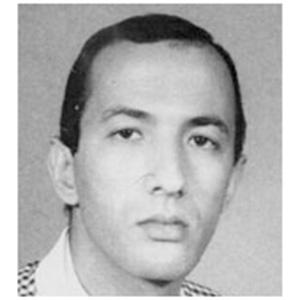
Saif al-Adel
Position: Head of Al-Qaeda
Connection: Saif al-Adel disappeared after 9/11 and later re-emerged in Iran with other leading Al-Qaeda members under the protection of the IRGC Quds Force. From Iran, al-Adel masterminded terrorist attacks abroad. In September 2015, Al-Adel was reportedly one of the senior al-Qaeda leaders released from Iranian custody in exchange for an Iranian diplomat kidnapped in Yemen. There are strong indications that al-Adel then relocated to Syria. But there are other reports al-Adel may still be in Iran. As of August 2016, there is a $5 million reward for information leading to his capture, which the U.S. doubled to $10 million in 2018. Al-Adel, the former chief of military operations, was residing in Iran when the former head of al-Qaeda, Ayman al-Zawahiri, was killed on July 31, 2022. Al-Adel succeed Zawahiri, and remains in Iran according to the FBI and the UN.
-
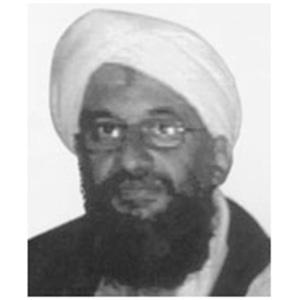
Ayman al-Zawahiri (Deceased)
Position: Served as Head of Al-Qaeda
Connection: Zawahiri, the former leader of Al-Qaeda, has long maintained ties to Iran. Throughout the 1990s, as the leader of Egyptian Islamic Jihad, Zawahiri was a frequent guest in Iran of Ali Fallahian, Iran's then-Minister of Intelligence, and Ahmad Vahidi, then-head of the IRGC's Quds Force. In 2003, The Washington Post reported on this "decade-old relationship" between Zawahiri and Vahidi, who had since become Iran's Minister of Defense. Zawahiri's relationship with Vahidi was reportedly instrumental in achieving safe harbor for Al-Qaeda operatives seeking sanctuary from the US invasion of Afghanistan in 2001. On July 31, 2022, Zawahiri was killed by a CIA drone strike in Kabul, Afghanistan.
-
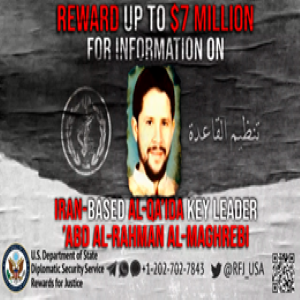
Abd al-Rahman al-Maghrebi
Position: Emir of Al-Qaeda’s Media Arm Al-Sahab
Connection: The U.S. government accused Iran of harboring al-Maghrebi in January 2021, and revealed al-Maghrebi “is responsible for overseeing al-Qaeda’s activities worldwide.”
-
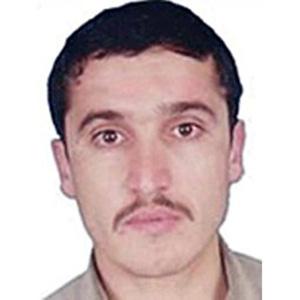
Atiyah Abd al-Rahman (Deceased)
Position: Served as Al-Qaeda’s operation leader, became 2nd in command following bin Laden’s death
Connection: Al-Rahman planned attacks on Western targets on behalf of bin Laden. At some point after the September 11 attacks, Rahman returned to Afghanistan where he liaised between its groups in Iraq, Iran, and Algeria. Bin Laden then appointed Rahman as an emissary to Iran, which enabled Rahman to travel freely to and out of Iran. On August 22, 2011, Rahman was killed by a CIA drone strike.
-
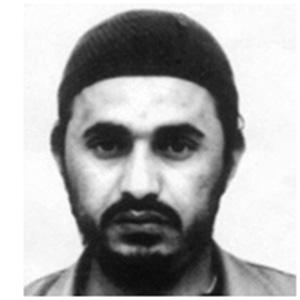
Abu Musab al-Zarqawi (Deceased)
Position: Head of Al-Qaeda in Iraq
Connection: Following the US invasion of Afghanistan, the Islamic Republic provided safe haven to Al-Qaeda operative Abu Musab al-Zarqawi, who went on to establish Al-Qaeda in Iraq. Zarqawi initially operated under the protection of the IRGC. According to intelligence officials, the time Zarqawi spent in Iran was crucial for rebuilding his network before relocating to Iraq. Al-Zarqawi was killed in a 2006 US drone strike.
-
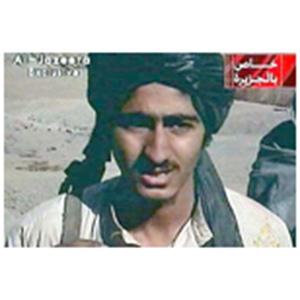
Saad Bin Laden (Deceased)
Position: Senior Al-Qaeda Operative, Terrorist Operations Planner
Connection: Under the auspices of the IRGC Quds Force, Osama's son Saad reportedly fled to Iran to escape the U.S.-led invasion of Afghanistan. In Iran, he assumed a more senior and active role in Al-Qaeda, including planning terrorist operations abroad. As of 2008, the US government believed Saad might have relocated to Pakistan with the assent of the Islamic Republic. In 2010 Saad bin Laden reportedly traveled from Iran to Pakistan. In September 2012, Al-Qaeda leader Ayman al-Zawahiri confirmed in a videotape that Saad was killed in a drone strike.
-
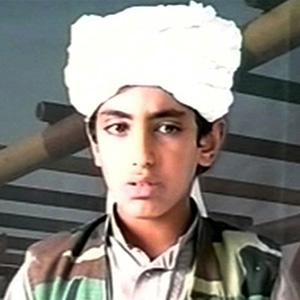
Hamza bin Laden (Deceased)
Position: Bin Laden’s Son, formerly believed to be the next Al-Qaeda leader
Connection: Hamza moved to Iran in the aftermath of the September 11 attacks, where he spent roughly ten years between 2001 and 2011. Hamza was sponsored by the Islamic Republic, where his ideology was shaped by a special team of Taliban ideologues. In 2008, while living under the protection of the Islamic Republic, Hamza appeared in a videotape calling for the destruction of “Britain and its allies,” also attacking the US, France, and Demark. In 2010, news came out that Iran was indeed hosting Bin Laden’s family in a high-end residency complex in Tehran, including Hamza bin Laden. His whereabouts since his reported release in 2011 were unknown, but reports indicated he was being groomed for a leadership role in Al-Qaeda. In 2019, US officials confirmed they had intelligence that Hamza Bin Laden was dead.
-
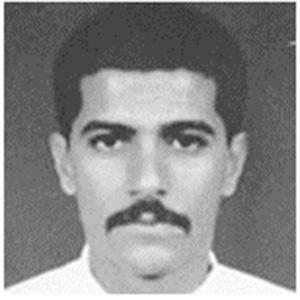
Abdullah Ahmed Abdullah (Deceased)
Position: Chief Financial Officer of Al-Qaeda
Connection: Abdullah, one of Al-Qaeda's top operational deputies, arrived in Iran after the US invasion of Afghanistan under the protection of the IRGC's Quds Force. In 2015 Abdullah Ahmed Abdullah was reportedly one of the operatives released by the Islamic Republic in exchange for an Iranian diplomat. In the 2015 Country Reports on Terrorism, the US State Department describes Abdullah as Al-Qaeda’s most experienced operational planner. Abdullah was gunned down in a targeted killing by Israeli agents on behalf of the US in a Tehran suburb in 2020.
-
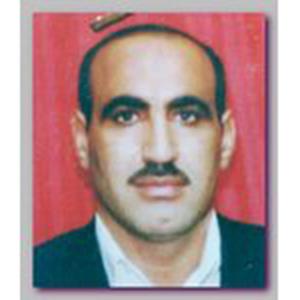
Abdullah Muhammad Rajab Abd al-Rahman (alias Ahmad Hasan Abu al-Khayr al-Masri and Abdul Khayr al-Masri) (Deceased)
Position: Deputy leader of Al-Qaeda
Connection: After the fall of Afghanistan in 2001, Abd al-Rahman fled to Iran. In 2015, Abu Khayr al-Masri was reportedly one of the five jihadists who were reportedly released from the custody of the Islamic Republic in exchange for an Iranian diplomat kidnapped in Yemen. In 2017, he was killed in Syria by a targeted CIA drone strike.
-
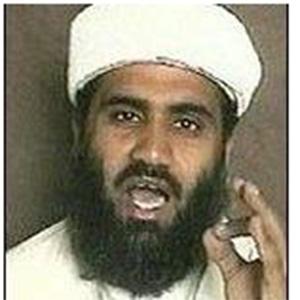
Suleiman Abu Ghaith (Imprisoned)
Position: Official Al-Qaeda Spokesman
Connection: The notorious Kuwaiti preacher reportedly arrived in Iran in early 2002. In 2010, the Islamic Republic reportedly allowed Abu Ghaith to return to Afghanistan in exchange for an Iranian diplomat who was kidnapped by the Taliban in Pakistan in 2008.
-
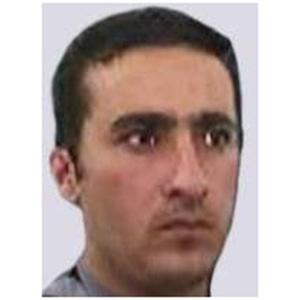
Ezedin Abdel Aziz Khalil
Position: Al-Qaeda Facilitator and Financier in Iran
Connection: Khalil has lived and operated in Iran since 2005 under agreement between al-Qaeda and the Islamic Republic. In his role as Al-Qaeda's representative in Iran, Khalil works with the organization's senior leaders to transfer money and recruits via Iranian territory to Pakistan and Afghanistan. The US is offering up to a $10 million reward for information leading to Khalil—the first time such money is being offered for an Al-Qaeda financier
-

Muhsin al-Fadhli (Deceased)
Position: Leader of Al-Qaeda in Iran, head of the Khorasan Group in Syria
Connection: Al-Fadhli is an Iran-based senior Al-Qaeda facilitator and financier. Al-Fadhli began working with Al-Qaeda’s Iran-based facilitation network in 2009. In 2013 Al-Fadhli reportedly arrived in Syria, where he became a leader of the Khorasan Group, a cadre of Al-Qaeda operatives who were sent to Syria to plot attacks against the West. Al-Fadhli was killed in a US airstrike in Syria on July 8, 2015.
-

Adel Radi Saqr al-Wahabi al-Harbi (Deceased)
Position: Deputy to Muhsin al-Fadhl; Logistics for the Khorasan Group, an affiliate of al-Qaeda fighting in Syria.
Connection: In 2013, the Department of Justice said that al-Harbi worked as a logistics person, facilitating “the travel of extremists to Afghanistan or Iraq via Iran on behalf of al-Qaeda and is believed to have sought funds to support al-Qaeda attacks.” Al Harbi joined Al-Qaeda’s network harbored by the Islamic Republic in 2011. On April 17, 2015, he was reported to have been killed in fighting against Syrian forces while serving as a member of the Khorasan Group, an affiliate of Al-Qaeda fighting in Syria.
Key Resources
Books & Reports
- Country Reports on Terrorism 2015: State Sponsors of Terrorism Overview | U.S. Department of State (2015)
- Al Qaeda, the Islamic State, and the Global Jihadist Movement: What Everyone Needs to Know? | Daniel Byman (2015)
- Hezbollah: The Global Footprint of Lebanon’s Part of God | Matthew Levitt (2013)
- The Al-Qa'ida-Qods Force Nexus | Michael S. Smith II, Kronos Advisory (2011)
- The Impact of 9/11 on Politics and War: "What Has Al Qaeda Been Doing Lately? The Tribal Areas of Pakistan and Beyond" | Rohan Gunaratna & Anders Nielson (2009)
- The Rise of Nuclear Iran | Dore Gold (2009)
- Iran's Proxy War Against America: Al Qaeda's Great Escape | Thomas Joscelyn (2007)
- 9/11 Commission Report: "Assistance from Hezbollah and Iran to Al Qaeda" (2004)
- Inside Al Qaeda: Global Network of Terror | Rohan Gunaratna (2003)
Treasury Department Designations
- “Treasury Designates Three Senior Al-Qaida Members” (July 20, 2016)
- “Treasury Designates Twelve Foreign Terrorist Fighter Facilitators” (September 24, 2014)
- "Treasury Targets Networks Linked To Iran" (February 6, 2014)
- "Treasury Further Exposes Iran-Based Al-Qa'ida Network" (October 18, 2012)
- “Treasury Designates Iranian Ministry of Intelligence and Security for Human Rights Abuses and Support for Terrorism” (February 16, 2012)
- "Treasury Targets Key Al-Qa’ida Funding and Support Network Using Iran as a Critical Transit Point" (July 28, 2011)
- "Treasury Targets Al Qaida Operatives in Iran" (January 16, 2009)
United States Court Decisions
- “Ashton, et al v. Al Qaeda Islamic, et al,” | United States District Court Southern District of New York (March 9, 2016)
- “Terrorist Attacks on September 11, 2001” | United States District Court Southern District of New York (May 10, 2010)
- “US Grand Jury Indictment Against Usama Bin Laden,” | United States District Court Southern District of New York (November 6, 1998)
Articles
- "U.S. blacklists three al Qaeda members living in Iran" | Reuters (July 20, 2016)
- "Is al-Qaeda’s affiliate in Syria no longer a ‘sideshow’?" | The Washington Post (July 20, 2016)
- "Top Intel Official: Al Qaeda Worked on WMD in Iran" | The Weekly Standard (July 12, 2016)
- "Iran Released Top Members of Al Qaeda in a Trade" | The New York Times (September 17, 2015)
- "Iran Is Working with Al Qaeda" | Thomas Joscelyn in The Weekly Standard (August 3, 2015)
- "Senior Al Qaida figure, Muhsin al-Fadhli killed in US airstrike in Syria, officials say" | The Guardian (July 21, 2015)
- "Judge orders Sudan, Iran to pay $75 million to family of USS Cole victim" | The Washington Post (March 31, 2015)
- "Doomed Diplomacy" | Thomas Joscelyn in The Weekly Standard (March 2, 2015)
- "The Rise of Al-Qaeda’s Khorsan Group: What It Means for U.S. National Security" | James Phillips in Heritage (October 6, 2014)
- "Targeted by U.S. airstrikes: The secretive al-Qaeda cell was plotting an ‘imminent attack’" | The Washington Post (September 23, 2014)
- "Terror Fears As Iran Frees Al Qaeda Members" | Sky News (September 14, 2015)
- "Senior al-Qaeda figure leaves Iran amid a series of departures by terrorist suspects" | Washington Post (February 14, 2014)
- "Treasury's Charge Sees Tehran Enabling al Qaeda in Syria" | Wall Street Journal (February 6, 2014)
- "Iran Honors Al-Qaeda Mentor" | Thomas Joscelyn in The Daily Beast (January 15, 2014)
- "Al Qaeda Terror Plot Targeting Canada Train Foiled, 2 Arrested, Police Say" | ABC News (April 22, 2013)
- "Iran, al-Qaeda relationship is showing cracks, U.S. officials and analysts say" | Washington Post (March 13, 2013)
- "U.S. Fears Iran's Links to al Qaeda" | Wall Street Journal (February 3, 2012)
- "Al Qaeda in Iran: Why Tehran is Accommodating the Terrorist Group" | Foreign Affairs (January 29, 2012)
- "U.S. Offers $10M for Iran-Based Al Qaeda Financier" | NewsCore (December 22, 2011)
- "NY judge: Iran, Taliban, al-Qaida liable for 9/11" | AP (December 22, 2011)
- "Iran Showed Al Qaeda How to Bomb Embassies" | Thomas Joscelyn in The Weekly Standard (December 3, 2011)
- "Iran, Sudan Liable For 1998 Embassy Attacks" | NewsCore (December 1, 2011)
- "U.S. Sees Iranian, al Qaeda Alliance" | Jay Solomon in The Wall Street Journal (July 29, 2011)
- "Analysis of Iran-al Qaeda 'Secret Deal'" | Patrick Clawson in The Iran Primer (July 28, 2011)
- "Top Al-Qaida Ranks Keep Footholds in Iran" | Brian Murphy in the Associated Press (July 9, 2011)
- "The Al Qaeda-Iran Connection" | Bruce Reidel in The Daily Beast (May 29, 2011)
- "The Iran-9/11 Connection" | Philip Shenon in The Daily Beast (May 22, 2011)
- "Court Filings Assert Iran Had Link to 9/11 Attacks" | Benjamin Weiser & Scott Shane in The New York Times (May 20, 2011)
- "WikiLeaks: The Iran-Al Qaeda Connection" | Thomas Joscelyn in The Weekly Standard (December 1, 2010)
- "Osama bin Laden's spokesman freed by Iran" | Thomas Joscelyn in The Long War Journal (September 28, 2010)
- "Reports Bolster Suspicion of Iranian Ties to Extremists" | Siobhan Gorman & Jay Solomon in The Wall Street Journal (July 27, 2010)
- "The Iran-al-Qaeda Conundrum" | Matthew Levitt & Michael Jacobson in WINEP (January 23, 2009)
- "Spy Chief Says Bin Laden Son Left Iran, Likely Is in Pakistan" | Siobhan Gorman in The Wall Street Journal (January 16, 2009)
- "Treasury Targets Al Qaida Operatives in Iran" | U.S. Treasury Department Press Release (January 16, 2009)
- “Al Qaeda in the Tribal Areas of Pakistan and Beyond” | Rohan Gunaratna & Anders Nielsen in Studies in Conflict & Terrorism (December 30, 2008)
- "Iran receives al Qaeda praise for role in terrorist attacks" | Con Coughlin in The Daily Telegraph (November 23, 2008)
- "Link seen on Iran force, Qaeda" | Dana Priest & Douglas Farah in The Washington Post (October 16, 2003)
- "Bin Laden Son Plays Key Role in Al Qaeda" | Douglas Farah and Dana Priest in The Washington Post (October 14, 2003)
- "Iran and Al Qaeda" | Ali Farassati in The Jamestown Foundation (September 11, 2003)
- "U.S. Suggests a Qaeda Cell in Iran Directed Saudi Bombings" | Douglas Jehl & Eric Schmitt in The New York Times (May 21, 2003)
- "Al Qaeda's New Leaders" | Susan Schmidt & Douglas Farah in The Washington Post (October 29, 2002)